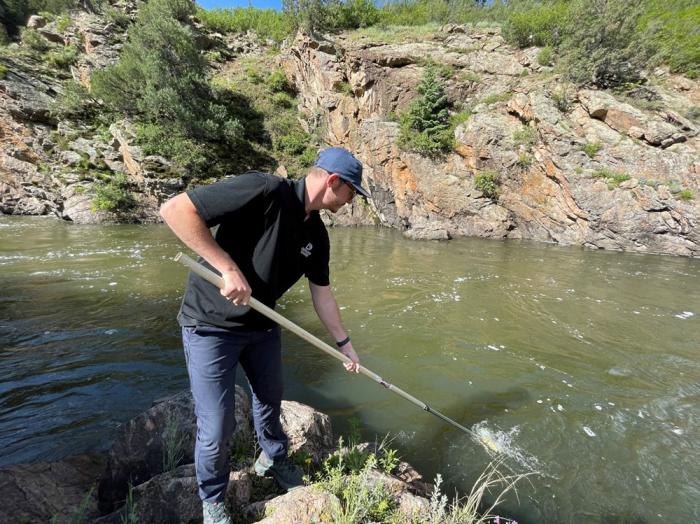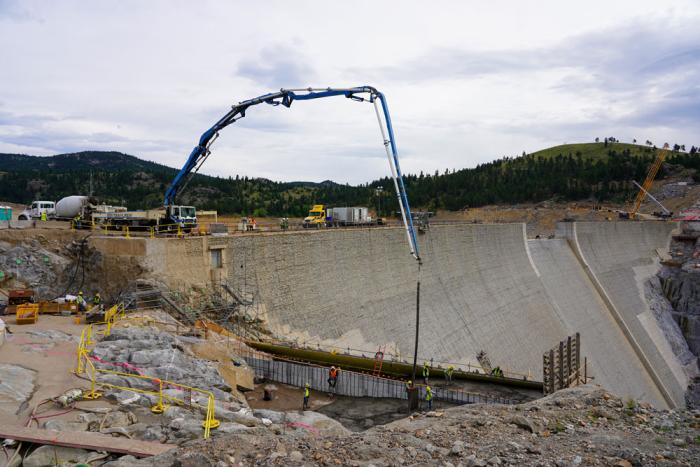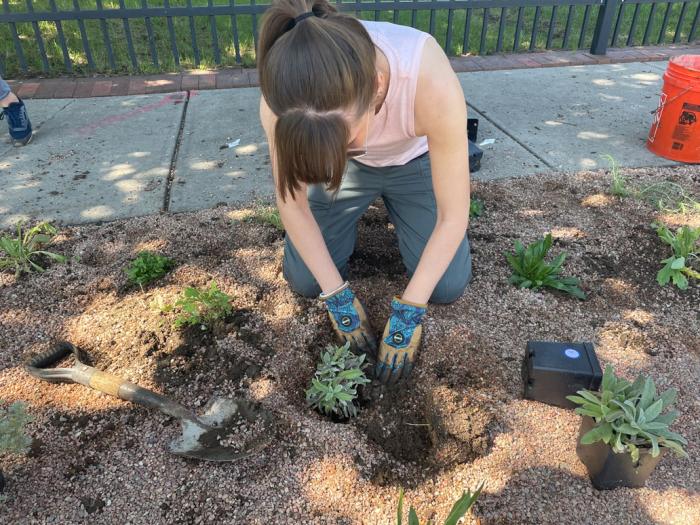Water rates to rise slightly in 2024
A major part of Denver Water’s mission is ensuring the large, complex system that collects, cleans and delivers drinking water for 1.5 million people is ready for future challenges.
And with more than 100 years of operations under its belt, Colorado’s largest water provider is at the peak point of its biggest period of capital investment in its history.
A series of “once in a lifetime” projects now underway — including expanding Gross Reservoir northwest of Denver, building a new water treatment plant near Golden, and replacing tens of thousands of old lead service lines in our service area — along with the ongoing work of maintaining and upgrading the system as needed (such as replacing about 80,000 feet of water mains under city streets every year), will boost the resilience, reliability and sustainability of the system that provides water to 25% of Colorado’s population.
Learn how Denver Water is investing in the system that supplies clean, safe drinking water to 1.5 million people every day.
“Denver Water is at a pivot point. These are historic times and we’ll be affected, just as the communities we serve will be affected, by climate change, population growth, variability in the economy, inflation and supply chains,” said Alan Salazar, Denver Water’s CEO/Manager who joined the organization in August.
“Water is a crucial resource that supports all of us. You can’t have civilization without it. Continuing to maintain and invest in the system that supports our water supply will ensure we — Denver Water as well as our customers — are ready for what lies ahead, while keeping rates as low as good service will allow.”
Denver Water expects to invest $1.9 billion over the next 10 years in projects that will maintain, repair, protect and upgrade the system and make it more resilient and flexible in the future. The utility is committed to ensuring the system can reliably deliver safe, clean and affordable water to its customers while mitigating the effects of the economy, from inflation to supply chain issues, on its costs.
Those factors, along with a desire to encourage water conservation, keep essential indoor water use affordable and ensure the utility is financially stable, were incorporated into the Oct. 11 decision by Denver’s Board of Water Commissioners to approve new water rates for 2024.
How the 2024 rates will affect individual customer bills will vary depending on where the customer lives in Denver Water’s service area and how much water they use.
The utility does not make a profit or receive tax dollars. It reinvests money from customer water bills and fees to maintain and upgrade the water system.
For typical single-family residential customers who receive a bill from Denver Water, if they use 104,000 gallons of water in 2024 as they did in 2023, the new rates will increase their monthly bill by an average of $1.60 to $2.30 over the course of the year, depending on where they live (in Denver or in the utility's suburban distributor districts) and the level of service they receive from Denver Water.
Monthly bills for single-family residential customers are comprised of a fixed charge, which helps ensure Denver Water has a more stable revenue stream to continue the necessary water system upgrades to ensure reliable water service, and a volume rate for the amount of water used.
The fixed monthly charge — which is tied to the size of the meter — is increasing by 50 cents in 2024, to $18.40 per month, for most single-family residential customers to ensure Denver Water is recovering 20% of its needed revenue from fixed charges.
After the fixed monthly charge, Denver Water’s rate structure for residential single-family customers has three tiers based on the amount of water used. The tiers are designed to keep essential indoor water use affordable while encouraging water conservation outdoors.
Find out about rebates and how to conserve water inside and out at denverwater.org/Conserve.
The first tier, which covers essential indoor water use for bathing, cooking and flushing toilets, is charged at the lowest rate.
The amount of water in this first tier is determined for each customer by averaging their monthly water use as listed on bills dated January through March each year. This is called their average winter consumption.
Water use above the average winter consumption — typically used for outdoor watering — is charged at a higher price to encourage water-conservation best practices. The more water a customer uses, the more they will pay.
Efficient outdoor water use is charged in the second tier (middle rate), followed by additional outdoor water use in the third tier (highest rate).
Bills in the summer months are typically higher due to higher water use outside.
Watch an animation of how Denver Water cleans the water for delivery to customers:
The difference in volume rates for customers who live inside Denver compared to those who live in the suburbs is due to the Denver City Charter (see Operating Rules), which allows permanent leases of water to suburban water districts based on two conditions: 1) there always would be an adequate supply for the citizens of Denver, and 2) suburban customers pay the full cost of service, plus an additional amount.
Join people with a passion for water at denverwater.org/Careers.
Major credit rating agencies recently confirmed Denver Water’s triple-A credit rating, the highest possible, citing the utility’s track record of strong financial management.
Denver Water also encourages customers to conserve water where they can indoors and out. Finding and plugging leaks inside the home can be done year-round and the utility offers rebates for qualified water-saving toilets and sprinkler equipment.
Outside, Denver Water encourages customers to conserve water by replacing bland expanses of water-intensive Kentucky bluegrass with more diverse, water-wise ColoradoScapes that fit naturally into our semi-arid climate and are interesting to look at through all seasons. These drought-resistant and climate-resilient ColoradoScapes include tree canopies and plants that help maintain vibrant urban landscapes and benefit our communities, wildlife and the environment.
Using less water also means more water can be kept in the mountain reservoirs, rivers and streams that fish live in and Coloradans enjoy. It also can lower monthly water bills, saving money.
“Reducing water use respects the beauty of our great state and ensures a safe water supply for generations to come. It’s simply the right thing to do. It’s a Colorado thing,” said Greg Fisher, Denver Water’s manager of Denver Water’s demand planning.
In addition to rates paid by customers, funding for Denver Water’s infrastructure projects, day-to-day operations and emergency expenses, like water main breaks, comes from bond sales, cash reserves, hydropower sales, grants, federal funding and fees paid when new homes and buildings are connected to the system.
In 2022, Denver Water successfully sought $76 million federal funding to support the Lead Reduction Program. The money has allowed the utility to increase the pace of the replacement work, adding 3,000 to 5,000 lead service line replacements to the 2023 and 2024 work schedules, beyond the about 5,000 already scheduled for replacement during each of those years.
An individual customer’s monthly water bill will vary depending on where they live in Denver Water’s service area, which indicates the level of service they receive from Denver Water, and how much water they use:





